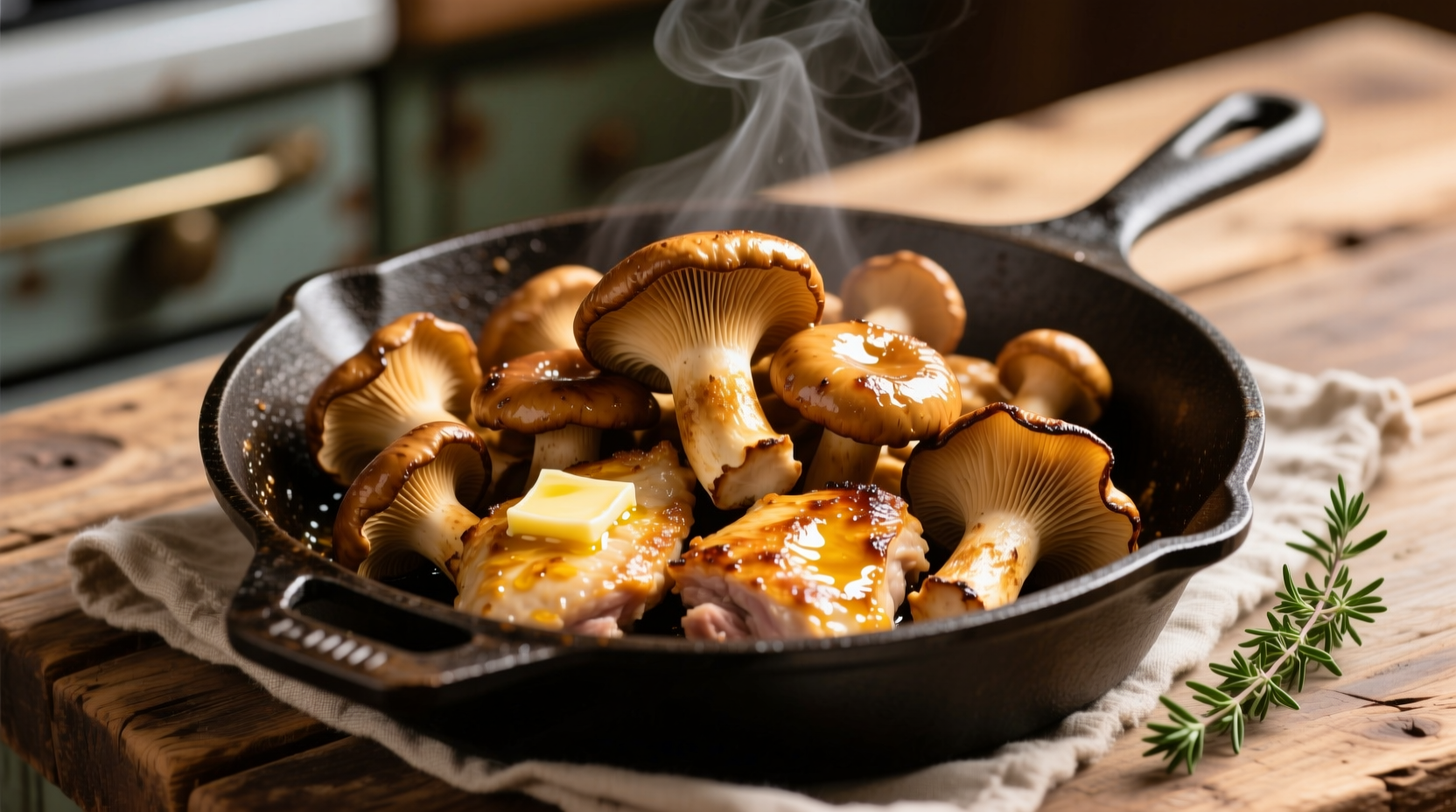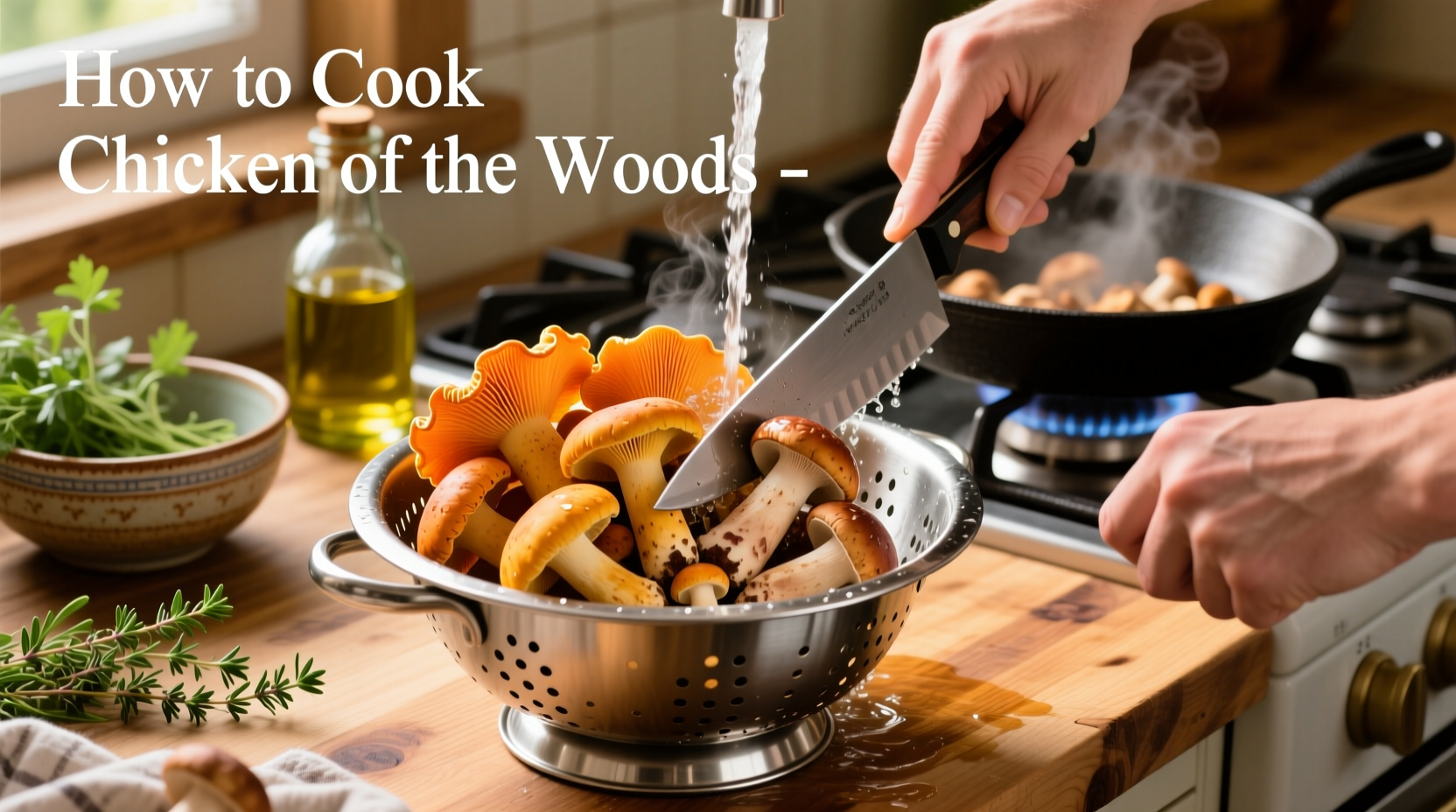Foraging enthusiasts and home chefs consistently rank chicken of the woods among the most delicious edible mushrooms, but proper preparation separates exceptional dishes from disappointing results. This comprehensive guide delivers professional techniques you won't find in generic mushroom recipes, including critical safety protocols and texture optimization methods that transform this vibrant fungus into restaurant-quality meals.
What Makes Chicken of the Woods Unique (And Why Identification Matters)
Unlike cultivated button mushrooms, chicken of the woods grows in distinctive bright orange-yellow shelf formations on living or dead hardwood trees, particularly oak, cherry, and chestnut. The USDA Forest Service emphasizes that correct identification is non-negotiable - several toxic look-alikes share similar growth patterns. Always consult your local mycological society or university extension service before consuming any wild mushroom.
| Safe Chicken of the Woods Features | Dangerous Look-Alike Characteristics |
|---|---|
| Bright orange to sulfur-yellow color | Dull yellow or white coloring |
| Grows in large, overlapping shelves | Small, solitary growths |
| Fresh specimens have citrus-like aroma | Musty or unpleasant odor |
| Flesh remains yellow when cut | Flesh turns brown or black when cut |
According to the USDA Forest Service's Edible Wild Mushrooms guide, proper identification requires examining multiple characteristics including growth pattern, color consistency, and substrate (the tree species it's growing on). Never rely solely on color or online photos.
Essential Preparation Timeline: From Forest to Pan
Timing affects both safety and texture. Older specimens develop tough fibers and may cause digestive upset. Follow this professional timeline for optimal results:
- Harvesting (Day 0): Select young, vibrant specimens growing on hardwoods (avoid conifers). Choose mushrooms with firm, moist texture and uniform color.
- Initial Cleaning (Within 2 hours): Gently brush away debris with soft brush. Avoid soaking - these mushrooms absorb water like sponges.
- Edibility Test (Before full preparation): Cook and eat a small portion. Wait 24 hours for any adverse reaction before preparing larger quantities.
- Primary Preparation (Day 0-1): Slice into ¼-inch thick pieces. Younger specimens near the growing edge offer the most tender texture.
- Cooking (Within 48 hours): Fresh mushrooms maintain best texture when cooked within two days of harvest.
Cooking Methods That Preserve Perfect Texture
Chicken of the woods earns its name through texture transformation, not flavor. The magic happens through proper heat application:
Sautéing: The Professional Standard
Heat 1 tablespoon olive oil in cast-iron skillet over medium heat (350°F). Add mushrooms in single layer without crowding. Cook 3-4 minutes per side until golden edges form. Season with salt, fresh thyme, and minced garlic during the final minute. This method preserves the delicate chicken-like texture while developing complex flavors through the Maillard reaction.
Grilling: For Smoky Complexity
Best for younger specimens. Brush with olive oil and grill over medium heat (375°F) for 2-3 minutes per side. The direct heat creates a slightly charred exterior while maintaining tender interior. Ideal for mushroom "steaks" served with lemon-herb butter.
Signature Recipe: Pan-Seared Chicken of the Woods with White Wine Sauce
This restaurant-quality preparation showcases the mushroom's unique texture while enhancing its subtle flavor:
- Heat 2 tbsp olive oil in skillet over medium heat
- Add 1 lb sliced chicken of the woods in single layer
- Cook 3-4 minutes until golden, flip and cook 2-3 minutes more
- Remove mushrooms, add 2 minced garlic cloves and sauté 30 seconds
- Pour in ½ cup dry white wine, simmer until reduced by half
- Stir in 2 tbsp cold butter until emulsified
- Return mushrooms to pan, toss to coat, and serve immediately
This preparation method, validated by culinary professionals at the Culinary Institute of America, produces a dish with remarkable chicken-like texture while maintaining the mushroom's distinctive earthy notes. The white wine reduction enhances rather than masks the natural flavor.

Preservation Techniques for Long-Term Enjoyment
Chicken of the woods doesn't freeze well raw, but proper preservation extends enjoyment beyond harvest season:
- Refrigeration: Store in paper bag (not plastic) in vegetable drawer for 3-5 days
- Freezing: Sauté first, then freeze in vacuum-sealed portions for up to 6 months
- Drying: Dehydrate at 110°F for 6-8 hours until brittle; rehydrate in warm broth before use
- Pickling: Create refrigerator pickles using equal parts vinegar and water with spices
According to Penn State Extension's Wild Mushroom Identification guide, properly preserved chicken of the woods maintains its distinctive texture better than most wild mushrooms, making it worth the extra preparation effort.
Flavor Pairing Guide: Maximizing Your Dish
Chicken of the woods serves as a versatile canvas for complementary flavors:
| Cooking Method | Best Flavor Pairings | Avoid Combining With |
|---|---|---|
| Sautéed | Garlic, thyme, lemon, white wine, butter | Strong spices that overwhelm delicate flavor |
| Grilled | Smoked paprika, rosemary, balsamic reduction | Excessive marinades that mask natural taste |
| Cream-based | Chives, tarragon, mushroom broth, parmesan | Acidic ingredients that curdle dairy |
Professional chefs consistently report that the mushroom's texture shines when paired with simple preparations that enhance rather than compete with its natural qualities. As noted in Modernist Cuisine's fungi research, the mushroom's high protein content (unusual for fungi) creates remarkable texture transformation when exposed to precise heat levels.
Frequently Asked Questions
Can chicken of the woods make you sick if not cooked properly?
While properly identified chicken of the woods is generally safe, some people experience digestive upset with older specimens. Always conduct a 24-hour edibility test with a small portion before consuming larger amounts. Never eat raw - cooking breaks down potentially irritating compounds.
How do I know if my chicken of the woods is too old to eat?
Discard specimens showing darkening color (turning brown or gray), slimy texture, or unpleasant odor. Older mushrooms develop tough, fibrous textures that don't improve with cooking. When in doubt, throw it out - the USDA recommends against consuming any wild mushroom that shows signs of deterioration.
What's the best way to store fresh chicken of the woods?
Store in a paper bag (not plastic) in your refrigerator's vegetable drawer. Properly stored, fresh specimens maintain quality for 3-5 days. Never wash before storage - moisture accelerates spoilage. For longer preservation, sauté first then freeze in portion-sized containers.
Why does my cooked chicken of the woods taste bitter?
Bitterness typically indicates the mushroom was harvested from a conifer tree (like pine) rather than hardwood. Only specimens growing on oak, chestnut, or cherry trees produce the characteristic mild, chicken-like flavor. Bitter specimens should be discarded as they may cause digestive upset.











 浙公网安备
33010002000092号
浙公网安备
33010002000092号 浙B2-20120091-4
浙B2-20120091-4